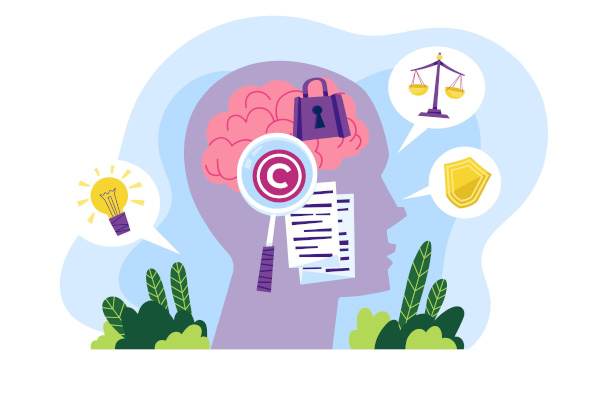Can You Use a Loan Agreement Template Without a Lawyer?
Whether you're lending money to a family member, a friend, or a business associate, having a proper loan agreement in place is crucial for protecting...
9 min read
LegalGPS : Jun. 3, 2025
Customer disputes are an inevitable part of running a business. Whether you're dealing with complaints about product quality, service issues, or payment disagreements, how you handle these conflicts can significantly impact your business reputation and bottom line. While legal representation is sometimes necessary, many customer disputes can be effectively resolved without the expense and formality of hiring an attorney.


Legal GPS Pro
Protect your business with our complete legal subscription service, designed by top startup attorneys.
This guide explores when and how businesses can successfully navigate customer disputes on their own, and when professional legal assistance becomes necessary.
Before deciding how to approach a dispute, it's important to understand what you're dealing with. Customer disputes generally fall into several categories:
Product or service quality issues: The customer believes your product or service didn't meet promised standards or expectations.
Billing and payment disputes: Disagreements about charges, fees, refunds, or payment terms.
Contract interpretation: Different understandings of what was agreed upon in a contract or terms of service.
Delivery or timing problems: Issues related to when or how products were delivered or services performed.
Customer service complaints: Disputes about how customers were treated during their interaction with your business.
Each type of dispute may require a different approach, but the good news is that many can be resolved through systematic, non-legal methods.
Resolving customer disputes without legal representation offers several advantages:
Cost savings: Legal fees can quickly accumulate, sometimes exceeding the value of the dispute itself. Handling matters internally can significantly reduce costs.
Time efficiency: Legal proceedings can drag on for months or even years. Direct resolution methods are typically much faster.
Relationship preservation: A collaborative approach to dispute resolution often preserves—and sometimes even strengthens—the business relationship, whereas legal action tends to permanently damage it.
Confidentiality: Resolving disputes privately keeps potentially sensitive business matters out of public court records.
Control over outcomes: When you directly negotiate with customers, you maintain more control over potential solutions than when a judge or arbitrator makes the decision.
As one business dispute resource notes, "Unresolved conflicts create a toxic workplace culture, often producing employee dissatisfaction and disengagement" and can disrupt company operations by affecting teamwork and collaboration and diverting time and resources away from key objectives. Early resolution without escalation to legal proceedings can prevent these negative impacts.
Many customer disputes can be successfully resolved without legal representation, particularly when:
In these cases, using the following systematic approach can lead to successful resolution.
From the moment a dispute arises, thorough documentation becomes your most valuable asset. This includes:
Good documentation not only helps you assess the validity of the complaint but can also be crucial if the dispute later escalates.
When a customer raises an issue, the first step is to truly understand their complaint:
This thorough approach shows respect for the customer's concerns while giving you the information needed to formulate an appropriate response.
When customers feel heard, they're often more willing to work toward a reasonable resolution. During discussions, demonstrate active listening by:
These techniques help de-escalate emotions and move the conversation toward problem-solving.
Before deciding how to respond, evaluate the situation in its broader context:
Sometimes, the most economically sound decision is to offer a concession even when you believe you're in the right, particularly if the customer has a large lifetime value or significant influence in your market.
Once you've gathered all relevant information, develop and present a clear resolution proposal:
Even if you can't give the customer exactly what they want, a thoughtful proposal with clear rationale shows good faith and professionalism.
If direct negotiation doesn't resolve the issue, Alternative Dispute Resolution methods offer a middle ground before resorting to legal action:
Mediation: A neutral third party helps facilitate a voluntary agreement between you and the customer. The mediator doesn't impose a decision but helps both sides communicate effectively and explore potential solutions.
Arbitration: A neutral third party hears evidence from both sides and makes a decision. Arbitration is more formal than mediation but still less formal than court.
As business dispute experts note, ADR methods give all parties a chance to avoid the expense, time, and privacy invasion of a trial. Each side can present their requests and develop an agreement that provides acceptable solutions.
ADR is particularly valuable when you wish to preserve the business relationship while still bringing structure to the resolution process. According to one resource, ADR is "cost-effective: typically less expensive than going to court" and "confidential: unlike court proceedings, ADR sessions are private".
A small IT consulting firm completed a website development project for a client who later refused to pay the final invoice, claiming the site didn't meet specifications. After several heated email exchanges, both parties were at an impasse.
Instead of immediately filing a lawsuit, the consulting firm proposed mediation through their local chamber of commerce, which offered low-cost mediation services. During the mediation session, a neutral third party helped facilitate a more productive conversation.
The mediator's presence changed the dynamic. The client was able to specifically identify functionality issues that hadn't been clearly articulated before, and the IT firm realized they had misunderstood some requirements. Together, they developed a solution where the IT firm would make specific adjustments to the website, and the client would pay 90% of the original invoice.
This resolution preserved the business relationship and actually led to additional work from the client in the future. Total cost: $300 for the mediation service versus thousands that would have been spent on legal fees.
If informal resolution methods fail, small claims court offers a relatively accessible legal venue that often doesn't require attorney representation.
Small claims courts are designed for resolving disputes involving relatively modest amounts of money without the complexity and expense of full litigation. According to the California Department of Consumer Affairs, small claims court is "a special court where disputes are resolved quickly and inexpensively" with "simplified" rules and "informal" hearings where "attorneys are generally not allowed".


Legal GPS Pro
Protect your business with our complete legal subscription service, designed by top startup attorneys.
The small claims process typically involves:
Small claims courts have monetary limits that vary by state. For example, in California individuals can claim up to $10,000, while in Texas the limit is $20,000. These courts are specifically designed for people to represent themselves, with simplified procedures and less formal rules of evidence than regular courts.
As one state's consumer protection resource explains, the plaintiff must pay a filing fee, which includes the charge to serve one defendant, that "varies by county and can range from approximately $45 to $55" with an extra charge for service for any additional defendants ranging "from $25 to $35 per defendant".
If you decide to pursue small claims court, maximize your chances of success by:
Remember that small claims decisions are often final for the plaintiff, meaning if you file the case and lose, you typically cannot appeal the decision.
While many disputes can be handled without legal representation, certain situations warrant professional legal assistance:
Large sums of money are at stake: When the potential loss significantly impacts your business, professional guidance becomes a wise investment.
Complex contractual issues: If the dispute hinges on interpreting complicated contract language or industry-specific regulations, legal expertise is valuable.
Potential precedent-setting cases: If the outcome could affect many other customer relationships or your overall business model, legal counsel helps protect broader interests.
The other party has retained counsel: If your customer has hired an attorney, you may be at a disadvantage without your own legal representation.
The dispute involves potential liability beyond the immediate issue: Some disputes carry risk of regulatory scrutiny or related claims that may not be immediately obvious.
You've received formal legal documents: If you've been served with a lawsuit or other formal legal papers, consult an attorney immediately.
As The Weisblatt Law Firm points out, when facing a business dispute, having a knowledgeable and experienced legal team on your side can make all the difference in reaching a favorable resolution.
A small specialty food producer received complaints from several customers claiming their products caused food poisoning. Initial investigation suggested the issue might be related to improper storage by a retailer rather than the producer's manufacturing process.
Instead of handling the situation independently, the business consulted with a food safety attorney who:
This early legal guidance helped the company respond effectively to the immediate situation while protecting them from potential liability that could have threatened the business's survival. The attorney fees, while significant, represented a small fraction of what the company might have faced in damages without proper guidance.
Between full legal representation and completely handling disputes yourself lies a middle ground of limited legal assistance:
Legal consultation: Pay for a few hours of attorney time to review your situation and provide strategic advice, even if you handle the day-to-day communications yourself.
Document review: Have an attorney review agreements or proposed settlements before finalizing them.
Coaching for ADR or small claims: Some attorneys offer coaching services to help you prepare for mediation, arbitration, or small claims court at a fraction of the cost of full representation.
This approach combines the cost advantages of self-representation with the security of professional legal input at critical junctures.
The most cost-effective way to handle customer disputes is to prevent them in the first place:
Clear contracts and policies: Use plain language that clearly outlines what customers can expect and what happens if those expectations aren't met.
Transparent communication: Proactively inform customers about potential issues before they discover them.
Quality control: Implement robust systems to ensure products and services consistently meet or exceed promised standards.
Customer feedback mechanisms: Create easy ways for customers to express concerns early, before they escalate to formal disputes.
Staff training: Ensure customer-facing employees are equipped to handle concerns professionally and empathetically.
Regular policy reviews: Periodically review and update policies based on past dispute patterns to address common issues.
The time invested in these preventative measures often yields significant returns through reduced dispute frequency and severity.
While some complex or high-stakes customer disputes require legal representation, many can be effectively resolved through systematic internal processes, alternative dispute resolution methods, or small claims court. The key is accurately assessing the nature and potential impact of each dispute to determine the appropriate approach.
By developing a thorough understanding of your options and implementing a structured dispute resolution process, you can often save significant time and money while preserving important customer relationships. When in doubt about whether legal representation is necessary, consider investing in a brief consultation with an attorney to help evaluate your specific situation and identify the most prudent path forward.
Remember that how you handle disputes sends a powerful message about your business values. Even when you can't give customers exactly what they want, a fair, transparent, and professional resolution process can transform a negative experience into an opportunity to demonstrate your commitment to customer satisfaction.
How long should I wait before escalating a dispute resolution approach?
Establish clear timeframes for each step in your dispute resolution process, typically allowing 5-10 business days for responses before escalating. Document these timeframes in your communication with the customer so expectations are clear.
What documentation is most important when resolving customer disputes?
Contracts, receipts, written communications, delivery confirmations, and service logs are typically most valuable. Also document all verbal conversations with detailed notes including dates, participants, and key points discussed.
Can I record phone calls with disputing customers?
Laws about recording conversations vary by state. Some states require consent from all parties, while others require consent from just one party. Research your state's laws before recording any conversations, or stick to written communication when possible.
How should I respond if a customer threatens legal action?
Take such threats seriously but remain professional. Document the conversation, gather all relevant information about the dispute, and consider consulting with an attorney. Avoid making statements that could be interpreted as admissions of fault.
Should I offer a refund even if I believe the customer is wrong?
Consider the refund amount versus the potential cost of a prolonged dispute in terms of time, possible legal fees, and reputational damage. Sometimes, providing a refund is the most cost-effective resolution even when the customer's claim lacks merit.
What should I do if I receive a small claims court summons?
Don't ignore it! Carefully note all deadlines, prepare your documentation, and consider at least a consultation with an attorney to understand your options. Failing to respond can result in a default judgment against you.

Legal GPS Pro
Protect your business with our complete legal subscription service, designed by top startup attorneys.
|
Premium Template
Single-use Template |
Legal GPS Pro
Unlimited Access, Best Value |
|
|
| Choose Template | Learn More |
| Trusted by 1000+ businesses | |
Table of Contents

Whether you're lending money to a family member, a friend, or a business associate, having a proper loan agreement in place is crucial for protecting...

Terminating an employee is rarely a pleasant experience. Beyond the emotional and practical challenges, employers often wonder about the legal risks...

If you're facing a small claims court case, you're probably wondering if you need to hire a lawyer. It's a common question, and the answer isn't...